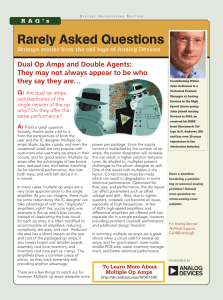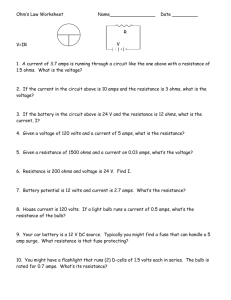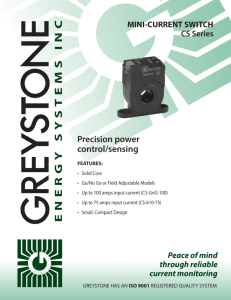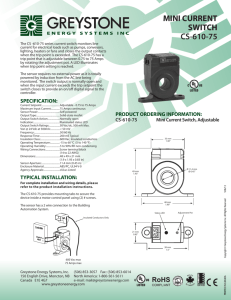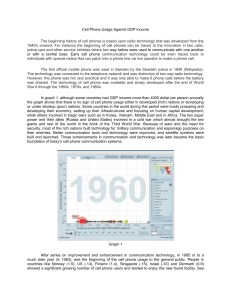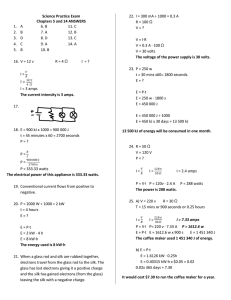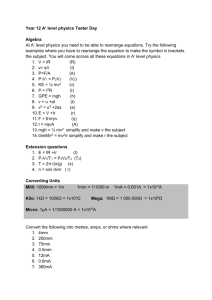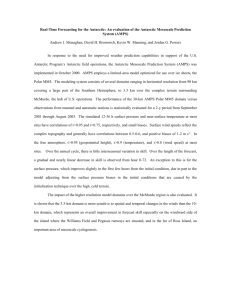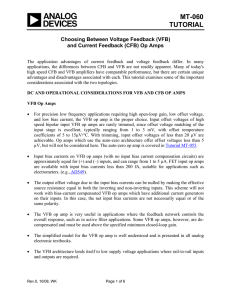12 VDC Power Distribution
advertisement
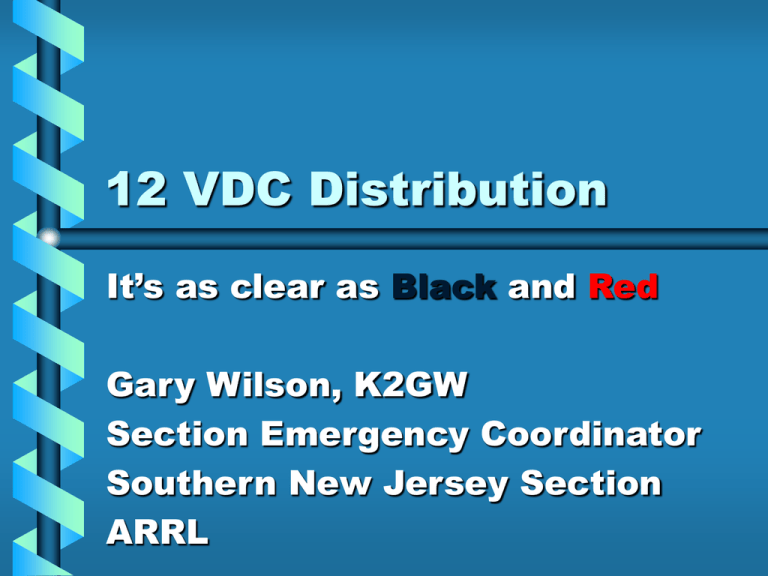
12 VDC Distribution It’s as clear as Black and Red Gary Wilson, K2GW Section Emergency Coordinator Southern New Jersey Section ARRL What Voltage is it anyway? – – – – – – – – – – 15.5 14.4 13.8 13.5 13.2 12.6 12.2 12.0 11.5 10.5 Max for most Radios (13.5 +15%) (2.4) Full Charge (2.3) Alternator out; Gel Cell Float Radio Design; Auto engine running (2.2) (2.1) Ignition off (2.0) Minimum for most radios (13.5 -15%) (1.75) Battery discharged Amateur Radio Power Requirements • HF Equipment – 2 Amps Receive – 20 Amps Transmit – 6.5 Amps per Hour typical* • VHF Mobile Rigs – 1 Amp Receive – 10 Amps Transmit – 3.3 Amps per Hour typical* Based on 25% Transmit & 75% Receive duty cycle DC Power Sources • Linear Power Supplies – Big & Heavy – Indestructible • Switching Power Supplies – Lightweight – More complex – Can generate noise 12 Volt Batteries – – – – – Work when AC mains fail. Require maintenance. Involve chemistry. Require charging Source. Need venting. Lead Acid Batteries • Automotive Type – They’re everywhere! – Designed for short bursts & recharge. – Repeated Deep cycle use will kill them. Lead Acid Batteries • Deep Cycle (Marine/RV) – Designed for deep discharge use. – Check water & charge state monthly. Lead Acid Batteries • GelCels – – – – Smaller capacity. Most are spill proof. Check charge state monthly. Can be stand-by floated with isolation. Testing Gel cells. • > 12.8 Open voltage • Less than .5 Volt drop after test • < 10 amp hour – Load of “C” for one minute • > 10 amp Hour – 1 minute full key down into dummy load. Wire for 12VDC • Keep leads short. • Match wire gauge to anticipated peak load and fuse accordingly. – – – – – – 8 10 12 14 16 18 Gauge Gauge Gauge Gauge Gauge Gauge – – – – – – 60 40 25 20 10 8 Amps Amps Amps Amps Amps Amps • Red for Positive; Black for Negative • Red/Black zip cord keep things neat! Battery Fusing • Batteries can deliver 100’s of amps. • This can melt wires and boil the acid! • All batteries need to be fused at the positive terminal! • Always cover the positive terminal! • Also fusing and covering negative terminal is a good backup. • Use automotive blade type (ATO & Mini) fuses. • Store spare fuses with battery. 12VDC Connectors • • • • • Need Need Need Need Need to to to to to handle amperage. be polarized. be standardized. be inexpensive. be easily attached. Anderson 30 Amp Powerpole • • • • • ARES/RACES standard across USA. Actually rated to 45 Amps. Can handle 100 Amps. Exceed your radio’s specifications. Cost is $1.00 or less per radio or power source. • Crimped or soldered in a minute. • Gardner-Bender GS-88 crimping tool is $8.50 at Home Depot. Advantages of the using this 12VDC standard • • • • • Handles modern power requirements. Safer than binding posts. Eases moving equipment. Enables switch to alternate power. Allows sharing of equipment and batteries. • Invaluable in Emergency work. • Useful for Field Day and Special Events. • RIGrunner fused distribution panel. More Information • ARES/RACES Standard: http://www.races.net/sca/powrpole.html • Vendors include: www.powerwerx.com http://www.westmountainradio.com/faqrr.htm http://www.dcpwr.com http://www.cablexperts.com (under DC Power) 12 VDC Demonstrations • • • • • • • Wire Batteries Fuses Distribution panels Chargers Meters Radios

